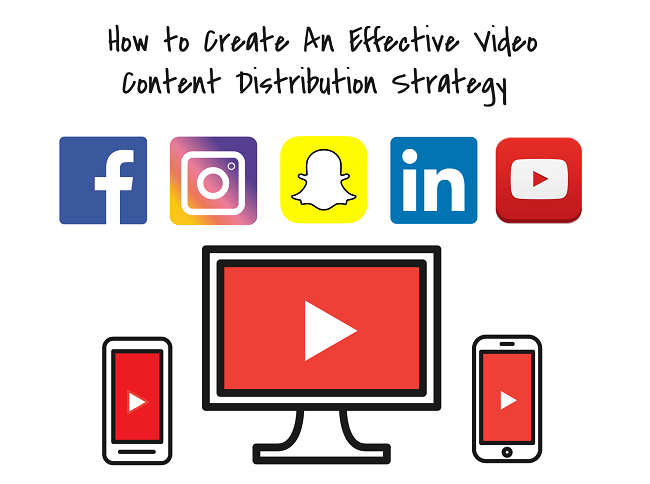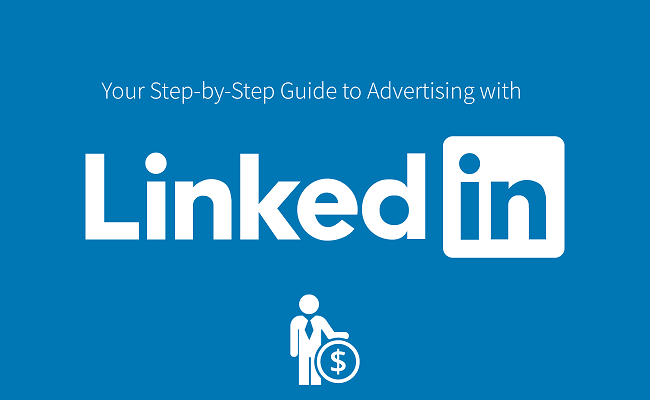Video is one of the most popular ways users share content with one another across the internet. From beauty tutorials on YouTube, to robotics videos trending across Facebook, social videos generate 12 times more shares than texts and images combined. Video popularity across social media is also true for businesses. Of the 86 percent of marketing professionals who are using video marketing, 78 percent have stated that it has helped them to increase sales. Video content has consistently yielded amazing results for businesses, and is one of the most popular mediums for advertisements today.
Read More About: How to Use Video Storytelling in Your Marketing Strategy
In this blog post, we’ll explain why video marketing is effective and how you can create a content distribution strategy for your digital strategy.
Where to Start with Video Content
What is your main goal? – Before you delve into the different platforms you want to use to publish your videos, the amount of money you want to budget, or even the length of these videos, you need to figure out what you want to accomplish with your video marketing strategy. Are you trying to generate more brand awareness? Are you announcing a new division within your business? Will these videos serve as a guide for your customers? Maybe you want to help generate more leads and conversions? Before you start creating your videos, you need to have specific intentions for what you want the videos to achieve. This is going to help you later on when you’re measuring your key performance indicators (KPIs) and return on investment (ROI).
Figure out your story – After you’ve decided what it is you want to attain by rolling out your video marketing strategy, you can begin to discuss the story you want to tell. Storytelling is the soul of any digital video strategy because storytelling is the soul of marketing. One of the biggest reasons why video marketing is effective is because it’s a powerful storytelling medium that captivates and engages audiences. Neil Patel, CEO of Kissmetrics and CrazyEgg, says you need to balance storytelling and metrics. He explains that it’s the cornerstone of truly effective marketing, and it’s especially important when it comes to video marketing. Metrics are a crucial factor to an effective digital strategy because they are how you will determine whether or not your campaigns are successful. That’s why it’s so important to decide what it is you want to accomplish with your video strategy, and what story you will tell to achieve your goal.
Read More About: Your Effective Guide to Social Media Video Advertising
Determine a budget – Once you’ve worked out the items above, you can begin to start thinking about a budget. While many large corporations have the luxury to set aside $400,000 for a video marketing agency to produce video content, other smaller businesses might not be as lucky. This is where social media video comes into play. It’s free to record a video on your phone and then post it on social media. That’s the beauty of these platforms! Because social media encourages users to upload and share their content, there’s no set method brands need to follow on how to do video marketing. As a business owner, you can make those decisions based on how your audience responds to your content and adjust as necessary.
Distribution Strategy

Creating a video release strategy largely depends on where you want to publish your videos. For social media platforms, there are different aspects and nuances you need to keep in mind for the distribution of your content. For example, some of the following video marketing tips and predictions for 2019 that give you a glimpse into your potential audience:
With over 2 billion users, Facebook is the social media platform that started it all, and the one where brands can achieve viral status for their content. In fact, 84% of video marketers use this social media platform as one of their main channels for video marketing. Users today also have the option of watching different kinds of video streams, and spend 3x more time watching live video versus video that’s been pre-recorded. For your video content distribution strategy, consider publishing your videos on Facebook and going live to entice your viewers and engage your audience.
Read More About: How to Use Facebook Live in a Digital Marketing Strategy
If your business focuses largely on visuals, your brand most likely already has an Instagram account. The little sister of Facebook, Instagram has over 1 billion active users. And while videos aren’t the main focus of this platform (the jury is still out on IGTV), videos garner 38% more engagement than Facebook. Apart from publishing a video as a post on Instagram, brands also have the option of publishing a video as an Instagram story. These videos disappear after 24 hours and are a great way brands can keep users engaged without sacrificing the aesthetic of their Instagram tiles or breaking the bank. Matt Secrist of Social Media Examiner says, “[y]our videos don’t have to be anything spectacular. In fact, the videos can be a great way to show your audience a unique view of the day-to-day happenings at your business.”
Read More About: 5 Ways Instagram Lets You Go Live With Your Marketing Strategy
Snapchat
While we’re on the topic of social stories, the originator for this social phenomenon was Snapchat! With 90% of Snapchat’s users between the ages of 13 and 24, this is your platform if you’re looking to appeal to a younger generation of users.
If you own a B2B brand or you want to share videos that lean more towards the informative side, LinkedIn is the platform for you. Of all social media channels, LinkedIn is responsible for 50% of all traffic to B2B websites and blogs. Use this platform to publish your videos if you mean business.
YouTube
Last but definitely not least, YouTube is the bread and butter of social video. With over 2.7 billion monthly active logged viewers and over 400 hours of video uploaded to the site per minute, YouTube is one of the best places to publish your video content. If you’re thinking of uploading a tutorial video, behind the scenes video, or even a goofy video of you and your employees, YouTube is the place where that kind of content will thrive.Maximize Your Video ROI

Now that you understand how to approach your video content strategy and have a better idea as to which social platforms to publish your videos, let’s talk about how to maximize your ROI. Remember the KPIs and metrics we talked about earlier on in the blog? Well, here’s where those initial strategy points come into play. Once you’ve published your video, you need to keep an eye on it! YouTube and other social sites will provide you with metrics to track so you can judge whether or not your video is being received well by your target audience. These metrics will come in the form of likes, views, shares, comments and, if you created the video with the intention for users to go to your website, traffic. To maximize your video’s ROI, keep a close eye on those metrics and remember the initial objective you set out to achieve in the beginning to see why video marketing is effective.
Social videos also give you the option to boost your posts so you can achieve exactly the numbers you’re looking for. With Facebook and other sites, you can put money toward increasing views, likes, shares, and even conversions. Decide which KPI is most important for your brand, and back it financially with a boosted post or a social campaign if you want to maximize your ROI.
Types of Video Marketing
There are many different types of video marketing you can use to boost your campaign, with examples including:
- Social videos – Social videos are typically short unless they are created with YouTube in mind. These videos are designed based on the social media platform they are being uploaded to.
- Product videos – Product videos are about presenting your products to your audience in the best possible manner. There are three key elements that these videos are built around; instructions, context, and uses. The key here is to present your product in a familiar context so viewers can imagine themselves using it and enjoying the benefits.
- Video adverts – Video ads are all about your business and your products. These videos are overtly promotional, designed purely to sell something to your audiences. They tend to be short and pack a powerful punch.
- Company story videos – These videos show the people behind your brand, which humanises your business.
- Testimonial videos – Testimonials take online reviews and elevate them to new heights. This involves taking current and past customers and putting them in front of the camera so they can share honest experiences with your brand.
- Educational videos – Educational videos are supposed to give your viewers information, yet they must do so in a manner that is compelling and interesting.
- How-to videos – How-to videos are easily shareable, they take your audience through the steps needed to complete a specific goal. You can use them at various points throughout your sales funnel, from showcasing the usability of your product at the consideration stage to building awareness.
- Explainer videos – Explaining the value behind a service or product is not always easy. Explainer videos offer an engaging and straightforward of doing this. These videos work by tackling a certain pain point the customer has and then explaining your solution to it. These videos are ideal for moving a prospect across the decision-making journey so that they reach the consideration stage.
Video Marketing Strategy Examples
We have seen some great video marketing campaigns in recent times.
A great example of a product marketing video is this one from Kodiak Cakes. If this does not make you want to grab through the screen and taste the flapjacks on your screen, you must have something wrong with your taste buds!
For a good example of social media video marketing, check out Airbnb. The brand shows that you do not need to overcomplicate things in order to create a great Facebook ad. Simple captions and appealing imagery are enough to capture the attention of viewers. Plus, the shooting star that sparks off a day-to-night transition gives a feeling of wanderlust that travellers adore.
We also love the Flyp Home explainer video, which shows you how to stage your home to ensure it sells at the best possible price.
Different Video Marketing Platforms
There are a number of great video marketing platforms you can use. Three of the best options are the following:
1. Vimeo – Vimeo is well-known in the video marketing world. The user-friendly interface makes it suitable for beginners, yet you can still make the most of beneficial video marketing analytics so you can drive your campaign forward. You can use Vimeo via your phone or desktop, and you can instantly embed, share, and publish videos to Twitter, YouTube, Facebook, your own website, and a whole host of other platforms.
2. Filmora – Filmora is an excellent choice if you want a video marketing tool that has impressive editing features. You can expect stock videos and photos, filters, overlays, and much more. With this solution, it has never been easier to create an innovative and exciting video.
3. Wave.video – Finally, wave.video is a user-friendly and powerful online video editing tool that will help you to put together sleek and professional videos for any platform and in any format that you can imagine. You can also make the most of the video hosting service, which is cloud-based and makes it incredibly easy to publish, share, and embed videos once they have been uploaded.
Future Trends in Video Marketing
Video marketing is certainly an exciting segment of online marketing, which is growing and progressing all of the time. In the near future, there are some creative and impactful trends you can expect to see:
1. Silent videos – You may think silent videos sound boring! However, 85 per cent of Facebook videos are watched without sound. This is because people tend to watch videos while commuting or in environments whereby sound would not be appropriate. Because of this, the industry is adapting and creating videos that are silent.
2. AR/VR videos – These videos are making their way into the mainstream. AR and VR-powered videos give a “try before you buy” experience.
3. Short-form videos – Short-form videos have already started to boom in popularity due to TikTok, and this is not a trend that is going anywhere. In a world where we are time-poor, short-form videos are a must.
4. Shoppable videos – Finally, shoppable videos are set to take the ecommerce world by storm. Facebook and Instagram have already started introducing their own types of shoppable video content. This means users will be able to quickly and easily purchase what they see in your marketing videos.
Tip Recap
Hopefully this blog post has shown you how to start your video marketing journey, and can act as your video marketing guide throughout the process. Here are the top tips to take with you so you can create videos for your content distribution strategy:
- Figure out what you want to achieve with your videos (e.g. Increased brand awareness, drive traffic, drive conversions, etc.)
- Determine what metrics will measure the success of your campaign from engagement on social sites to new readership on your blog
- Think about how you want to segment your budget for your video content, or if you want to create a budget at all and instead focus on the free features social media has to offer
- Different social platforms offer different kinds of perks when videos are published on their sites
- In order to maximize the ROI of your video content strategy you need to keep a close eye on how your video content is received and adjust your campaign accordingly to achieve the original results you sought out to gain





Tell us your thoughts in the comments